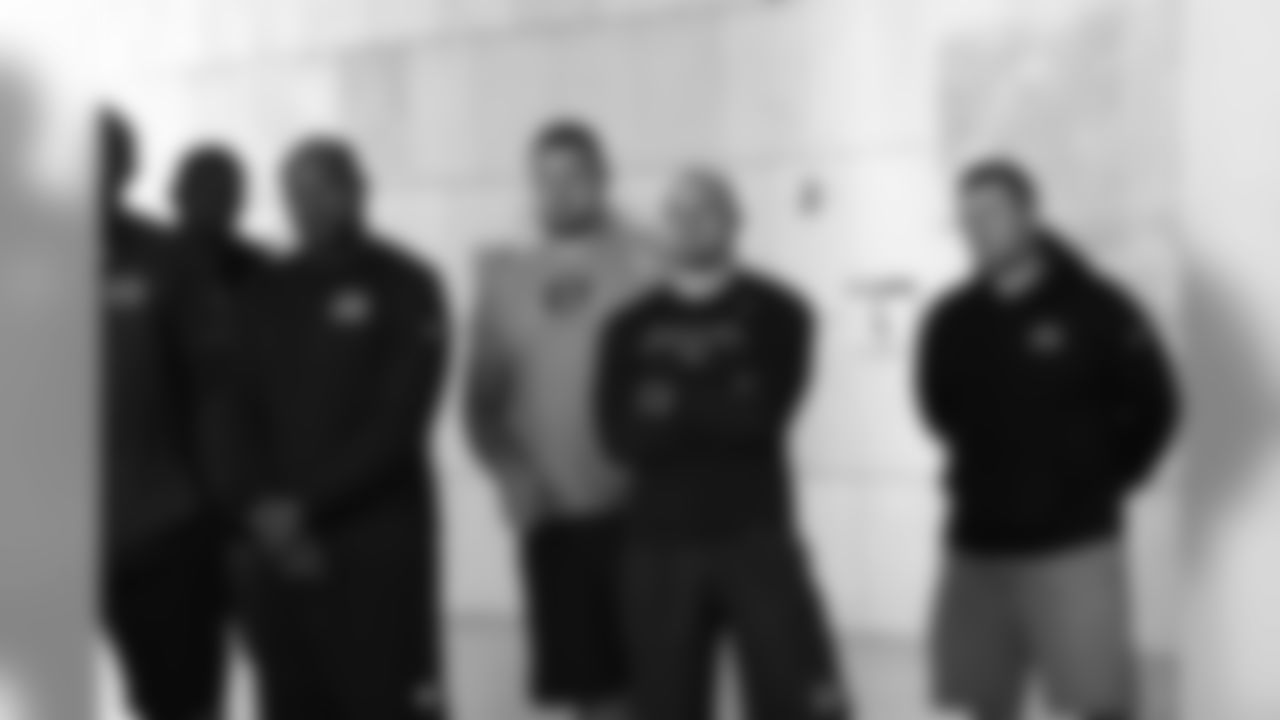Karlos Dansby has had 12 years, 180 games, and four franchises worth of what they like to call nowadays team-building sessions. Everything from bowling to basket-weaving as a way to use up one of the 10 voluntary practices in the name of unity.
But then he came to Cincinnati and the Bengals this spring to play linebacker and on Thursday head coach Marvin Lewis walked him over to the National Underground Railroad Freedom Center and instead of chemistry Dansby found history.
"Eternal flame. Safe haven. Freedom Center. Cincinnati. Beautiful," dictates Dansby into his phone, clicking the video button that captured the flame in front of the Roebling Suspension Bridge that rumbles into the old slave commonwealth of Kentucky.
"Yeah, bowling. Stuff like that," Dansby says later. "But nothing like this. Not with this much prestige and history behind it. I'm taping the whole thing. This is a monumental moment.
"It's education. It's history. You don't know what you don't know and there are a lot of things I didn't know."
Dansby, who has played on more surfaces than Steely Dan, didn't know about the turf. The Freedom Center is on the same patch of river as Paul Brown Stadium, where he practices and plays, but he didn't know that during slavery free blacks were poised on the banks to help those coming from the south.
"This building where we are, there was basically a community out there called 'Little Africa,'" says Dansby, briefly breaking away from his tour group. "Who knew that? I didn't know that."
Clarence Newsome, president of the Freedom Center, is his own story. A former running back who was the first African-American scholarship athlete at Duke, he greeted the Bengals Thursday in a 15-minute address. And no doubt some of them learned that not only did many black high schools once practice on dirt fields and played games on Thursday nights and that colleges like Clemson didn't have black players in the 1960s, but also there are more than 20 million people in the world right now considered enslaved.
But Newsome was there to teach them about this turf.
"You practice and play on some of the most historically significant real estate in all America," Newsome tells them after they walked over 90 or so strong from PBS. "And if anything makes you special all the more, it's that. Because I'm beginning to feel the championship run. When you think about the intangibles and the ingredients that come together to help shape a team's mind about how special they are, I hope you would keep that in mind."
What Marvin Lewis knows through his own 13 seasons, 215 games, four offensive coordinators, four defensive coordinators, and four AFC North titles is that team building depends on the team and what you're building. The last time he took his team to the Freedom Center to build was 2007 and only Domata Peko and Andrew Whitworth were around to remember it.
"It's an opportunity to connect with their teammates and learn something together with their teammates," Lewis says. "On a day we take a step back from football. They get a chance to move forward as teammates and people."
Lewis knows what they'll learn. Like the wooden boxes upstairs. Family members used them to ship other family members from south to north to freedom.
"Incredible," Lewis says.
Newsome says this turf isn't a slavery museum or a library of history. He calls it "a freedom center so we can live life to the fullest." As his team attempts to bounce back from the bitterness of January, Lewis hopes his April motto of "Pound The Rock," finds some resolve in the lessons of the turf.
"A lot of the words we use," Lewis says, "relentless, overcoming adversity, pound the rock, whatever it would be, is the story of this place. It's the story of overcoming the trials and tribulations of the people that are depicted in these exhibits."
As Newsome spoke, Lewis jotted down his game plan. There would be six groups. The backers would tour with the quarterbacks. The defensive line with the DBs. The wide receivers and specialists. The running backs and tight ends. And so on.
Dansby stops recording but keeps looking across the bridge.
"You hear there were slaves that walked 750 miles just to be sold," he says. "You have to think about 750 miles. That's a long way driving. Just think about walking chained to somebody. That determination and that grit it took to endure something like that. It's unbelievable. Unbelievable."
After 12 years, 180 games, and four franchises, Dansby had an OTA to record.
"Inspirational," he says as he goes back to his group.
Cincinnati Bengals end OTAs with a team visit to the National Underground Railroad Freedom Center.































